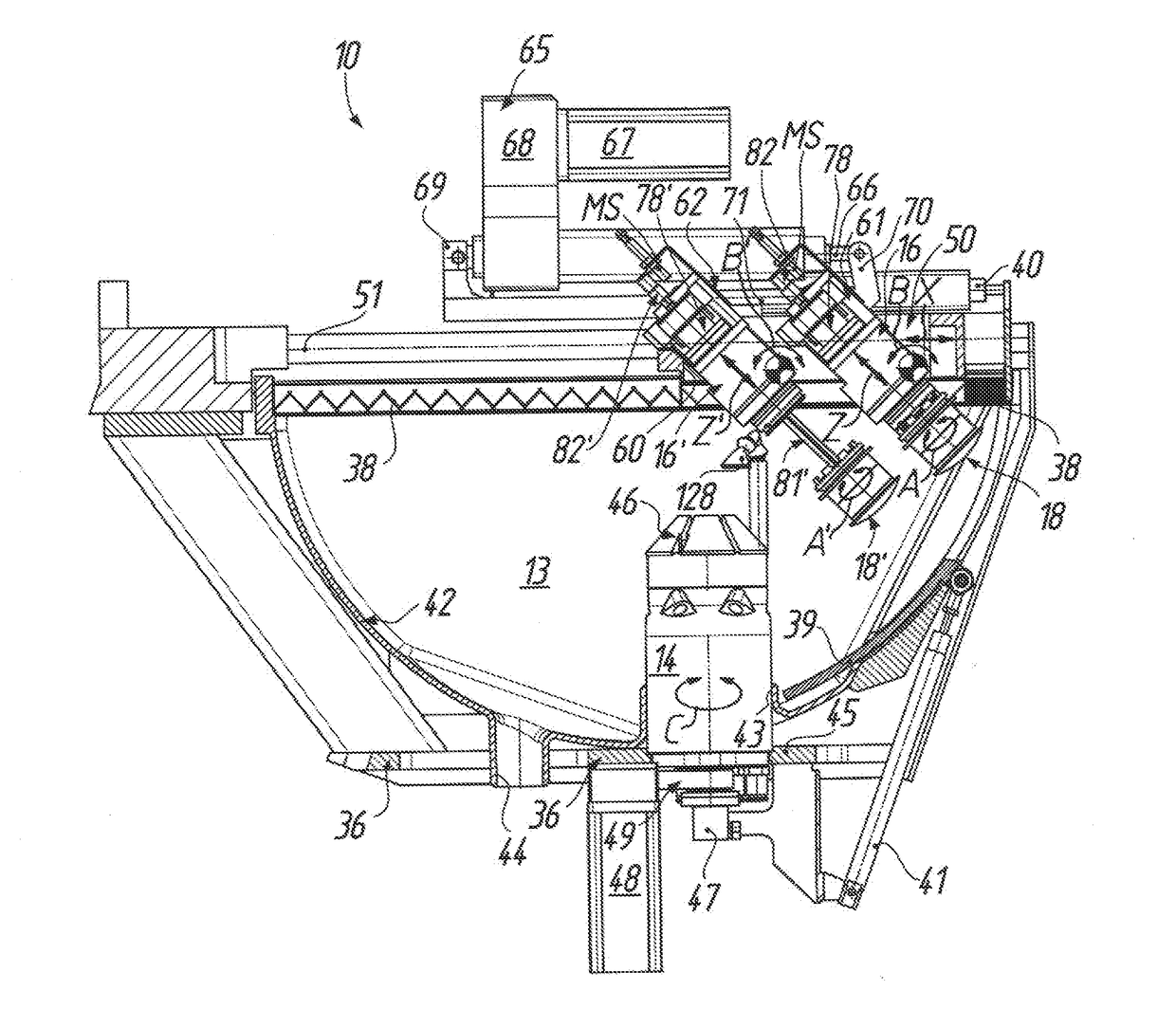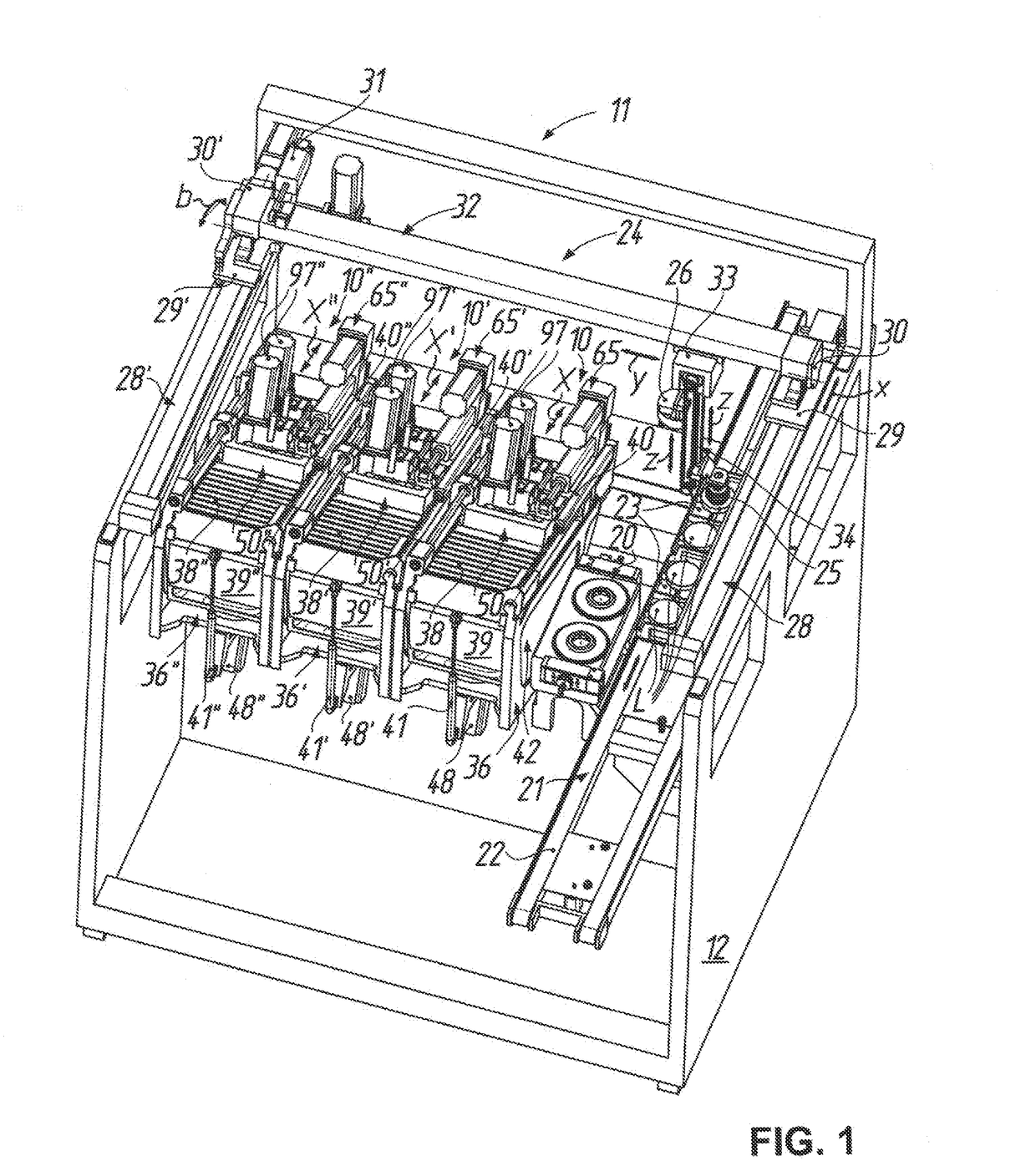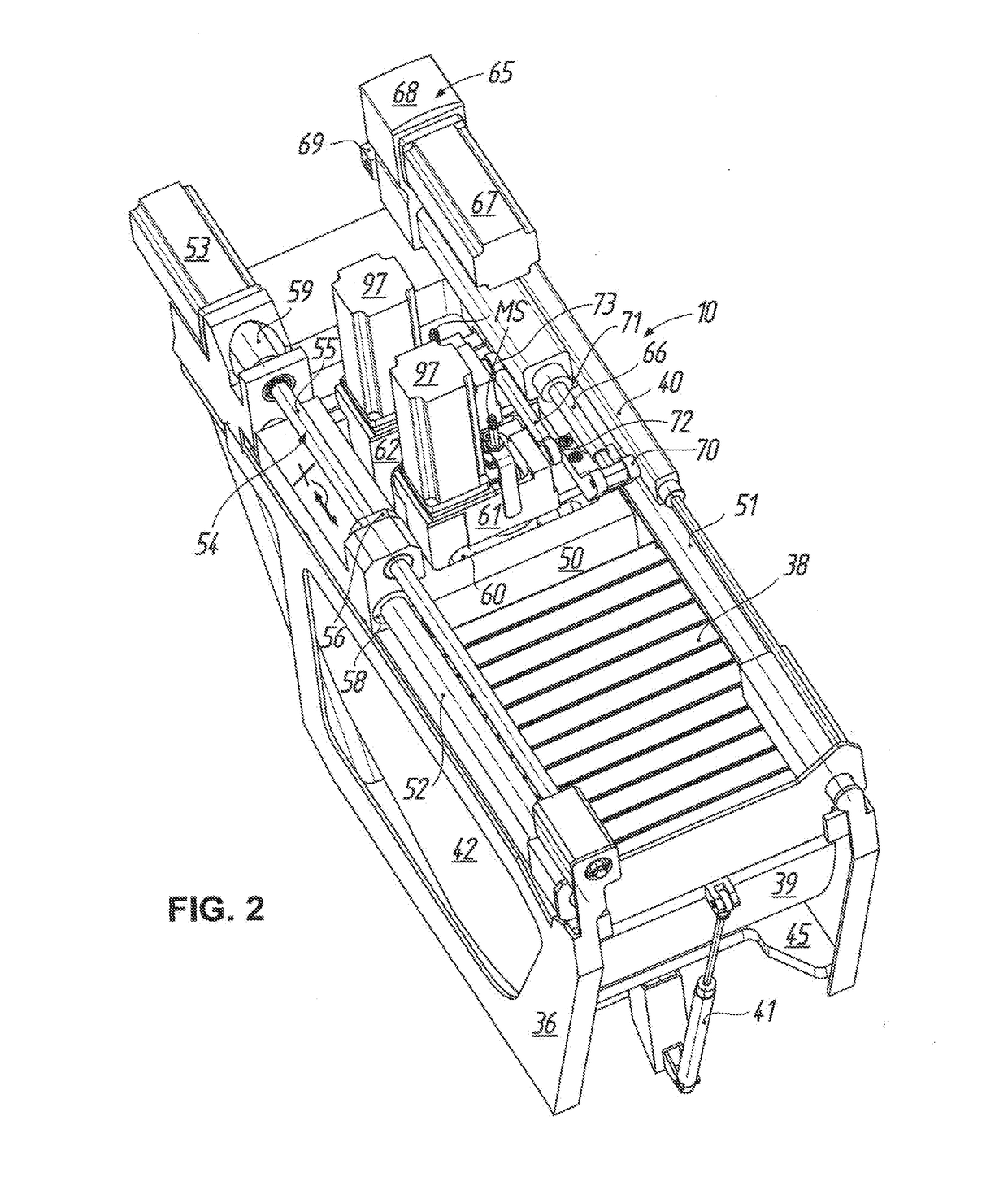Device for fine processing of optically effective surfaces on, in particular, eyeglass lenses
a technology of optically effective surfaces and fine processing, which is applied in the direction of optical surface grinding machines, lens, manufacturing tools, etc., can solve the problems of long processing times, affecting the surface quality of the lens, and reducing the time required for tool change, etc., and achieving the effect of improving the surface quality, and improving the surface quality
- Summary
- Abstract
- Description
- Claims
- Application Information
AI Technical Summary
Benefits of technology
Problems solved by technology
Method used
Image
Examples
Embodiment Construction
[0051]A polishing machine as preferred case of use or use location of a device 10 for fine processing of optically effective surfaces cc, cx at workpieces such as, for example, spectacle lenses L (cf. FIG. 8) is denoted by 11 in FIG. 1. In the illustrated embodiment, arranged in a common machine frame 12 as polishing cells are—in correspondence with the number of spectacle lens L to be polished—three such devices 10, 10′, 10″ of respectively identical construction. As will be explained in more detail in the following with reference to FIGS. 2 to 7 on the basis of the device 10, which is on the right in FIG. 1, as representative for all three devices 10, 10′, 10″, the device 10 comprises a workpiece spindle 14 which projects into a work space 13 and by way of which a spectacle lens L to be polished, which is usually held by means of a blocking material M on a block piece S for mounting in the workpiece spindle 14 (see, again, FIG. 8), can be driven to rotate about a workpiece axis of...
PUM
 Login to View More
Login to View More Abstract
Description
Claims
Application Information
 Login to View More
Login to View More - R&D
- Intellectual Property
- Life Sciences
- Materials
- Tech Scout
- Unparalleled Data Quality
- Higher Quality Content
- 60% Fewer Hallucinations
Browse by: Latest US Patents, China's latest patents, Technical Efficacy Thesaurus, Application Domain, Technology Topic, Popular Technical Reports.
© 2025 PatSnap. All rights reserved.Legal|Privacy policy|Modern Slavery Act Transparency Statement|Sitemap|About US| Contact US: help@patsnap.com



